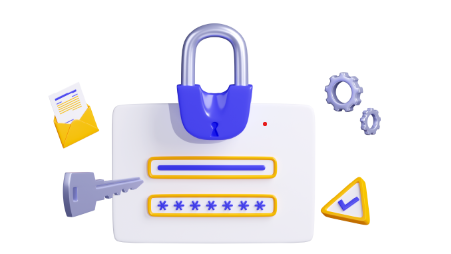In today’s digital world, securing cloud environments is essential. As businesses increasingly rely on cloud services, the risks of data loss and security breaches rise. Implementing a strong security framework is critical for protecting sensitive data and ensuring business continuity. This blog explains how 24/7 monitoring and support and disaster recovery and backup can enhance cloud security, enabling organizations to respond effectively to threats and recover quickly from incidents.
Why 24/7 Monitoring Matters
Continuous monitoring of cloud environments helps identify and reduce security threats. Here are the main benefits of having 24/7 monitoring and support:
1. Real-Time Threat Detection
Cyber threats are constantly changing. It’s vital for organizations to spot security breaches immediately. With 24/7 monitoring, security teams can find unusual activities as they happen. For example, if someone tries to access data without permission, alerts can be sent out right away. This allows teams to act quickly to stop potential breaches.
Furthermore, many monitoring tools use machine learning algorithms to analyze patterns in user behavior. By understanding what constitutes normal activity, these systems can identify anomalies faster and with greater accuracy.
2. Compliance Management
Many industries have strict rules about data security and privacy. Continuous monitoring helps businesses keep up with these rules by tracking user activity and access controls. Automated reports can show compliance with regulations, reducing the risk of penalties for non-compliance. Regular audits, aided by monitoring data, can help identify gaps in compliance, enabling organizations to address issues proactively before they lead to legal troubles.
3. Faster Incident Response
Proactive monitoring allows teams to react to incidents more quickly. With constant oversight, security teams can respond to alerts and potential threats without delay. This rapid response can minimize damage and gather valuable information about attacks, helping teams strengthen their defenses.
In addition, many organizations employ incident response teams that are on standby 24/7. These teams are trained to respond immediately, ensuring that any potential threat is mitigated efficiently and effectively. This level of readiness can be a significant advantage in today’s fast-paced digital landscape.
The Role of Disaster Recovery in Cloud Security
While monitoring is critical for spotting threats, disaster recovery and backup are equally important for protecting data and applications. Here’s what you need to know about disaster recovery:
1. Data Protection
Good disaster recovery plans include regular backups of important data. This ensures that businesses can restore lost information in case of a data breach or ransomware attack. Performing test migrations regularly helps organizations learn how to recover data quickly and reduce downtime.
Backup solutions can range from simple file backups to comprehensive system images, depending on an organization’s needs. Cloud services offer various options, such as incremental backups, which only back up changed data, and full backups, which save complete datasets.
2. Business Continuity
A solid disaster recovery plan is key to maintaining business operations. This plan outlines steps to restore services after a disruption, ensuring critical services are available to customers. By combining monitoring with disaster recovery, organizations can stay operational even during security incidents.
Additionally, businesses should regularly test their disaster recovery plans through simulated incidents. These tests can identify weaknesses in the recovery process, ensuring that teams are prepared for actual emergencies. The importance of business continuity cannot be overstated; a single outage can significantly impact revenue and customer trust.
3. Compliance Requirements
Just like monitoring, disaster recovery plans must follow compliance rules. Organizations need to ensure their data protection methods align with regulations. Disaster recovery solutions should include features that support compliance, such as data encryption and secure access controls.
Regular audits of disaster recovery plans also help organizations stay compliant. They ensure that all protocols are being followed and that any changes in regulations are swiftly addressed. Compliance is not just about following the rules; it can also improve an organization’s reputation and customer trust.
Strategies for Boosting Cloud Security
To enhance cloud security with 24/7 monitoring and disaster recovery, consider these strategies:
1. Conduct a Cloud Readiness Assessment
Before implementing monitoring and disaster recovery solutions, assess your current security stance. A Cloud Readiness Assessment helps organizations identify areas for improvement and ensures that the right measures are in place.
This assessment should evaluate existing policies, technologies, and personnel capabilities. Understanding current strengths and weaknesses allows organizations to prioritize security investments effectively.
2. Develop a Cloud Strategy
A clear Cloud Strategy is essential for effective security measures. This plan should outline specific goals for monitoring and disaster recovery, including technology choices and resource allocation. Well-defined objectives will align security efforts with overall business goals.
Involving all stakeholders, including IT, management, and legal teams, can lead to a more comprehensive strategy. Each group can offer valuable insights into potential risks and requirements.
3. Create a Cloud Roadmap
A Cloud Roadmap guides organizations through implementing monitoring and disaster recovery solutions. This roadmap should detail steps for setting up monitoring tools, configuring disaster recovery systems, and training staff. A structured approach ensures all security aspects are addressed.
Consider breaking the roadmap into phases, such as initial assessments, tool implementation, testing, and ongoing management. Each phase can have specific goals and timelines to ensure steady progress.
4. Implement Integrated Solutions
Using integrated monitoring and disaster recovery solutions can streamline security processes. Unified platforms allow organizations to oversee cloud environments and manage recovery from a single interface. This integration boosts efficiency and collaboration between security and IT teams.
For example, tools that combine monitoring and backup can provide insights into system performance while ensuring that data is securely backed up. This holistic approach can enhance overall cloud security.
5. Regular Testing and Updates
To keep monitoring and disaster recovery strategies effective, conduct regular tests and updates. Simulating security incidents helps teams practice their responses and identify areas for improvement. Additionally, keeping systems updated with the latest security patches reduces vulnerabilities.
Establish a routine schedule for testing and updating protocols. This not only keeps your systems secure but also fosters a culture of continuous improvement within the organization.
6. Invest in Managed Kubernetes Services
As businesses increasingly adopt cloud-native architectures, utilizing Managed Kubernetes Services can enhance security. These services provide automated management of containerized applications, ensuring they are deployed securely and efficiently.
Managed services often include built-in monitoring and disaster recovery features, allowing organizations to focus on core business functions. They also provide scalability, allowing businesses to adjust resources based on demand while maintaining high security standards.
Explore Our Cloud Services at a Glance
Connecting You to the Cloud Effortlessly!
Real-World Examples
Many organizations have successfully enhanced their cloud security through 24/7 monitoring and disaster recovery. Here are a couple of examples:
Example 1: Dropbox
Dropbox, a leading cloud storage provider, uses 24/7 monitoring and support to track user activity and spot security issues. By continuously checking access patterns, Dropbox can identify unusual behavior and take action promptly. Their disaster recovery plan also ensures user data is secure, allowing for quick restoration in case of incidents.
The company’s commitment to security has helped build user trust and maintain a competitive edge in the crowded cloud storage market.
Example 2: Salesforce
Salesforce, a prominent cloud software company, combines monitoring and disaster recovery to protect customer data. Their proactive monitoring detects potential threats in real time, while robust disaster recovery processes keep services running during disruptions. This combination has helped Salesforce maintain strong security and customer trust.
Additionally, Salesforce employs advanced encryption and compliance measures to safeguard sensitive data, making it a leader in cloud security.
FAQs
1. What is 24/7 cloud monitoring?
24/7 cloud monitoring involves continuously tracking the performance and security of cloud environments to detect threats and anomalies. This proactive approach ensures organizations can respond to incidents swiftly.
2. Why is disaster recovery important for cloud security?
Disaster recovery protects critical data and applications, ensuring they can be quickly restored after a cyberattack or hardware failure. It also supports business continuity, helping organizations maintain operations during disruptions.
3. How can I assess my organization’s cloud security readiness?
Conducting a Cloud Readiness Assessment helps evaluate your current security stance and identify areas for improvement. This assessment can guide your security strategy and implementation efforts.
4. What should a disaster recovery plan include?
A disaster recovery plan should outline data backup procedures, restoration processes, compliance measures, and business continuity strategies. Regular updates and testing are also crucial for maintaining its effectiveness.
5. What are Managed Kubernetes Services?
Managed Kubernetes Services are cloud-based solutions that automate the deployment and management of containerized applications. These services help organizations ensure their applications run securely and efficiently while providing built-in monitoring and disaster recovery features.
Conclusion
Enhancing cloud security requires a comprehensive approach that includes both 24/7 monitoring and support and disaster recovery and backup. Continuous monitoring helps organizations detect threats in real time, while effective disaster recovery ensures that critical data and applications are safeguarded. By adopting a strategic approach and implementing integrated solutions, including Managed Kubernetes Services, organizations can create a resilient security framework that protects their cloud environments and maintains business continuity.



